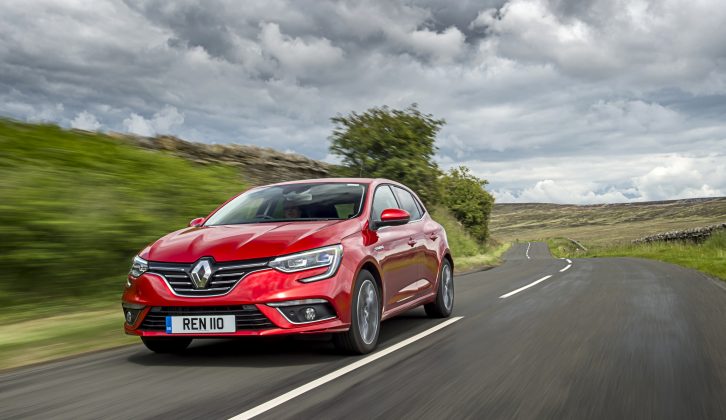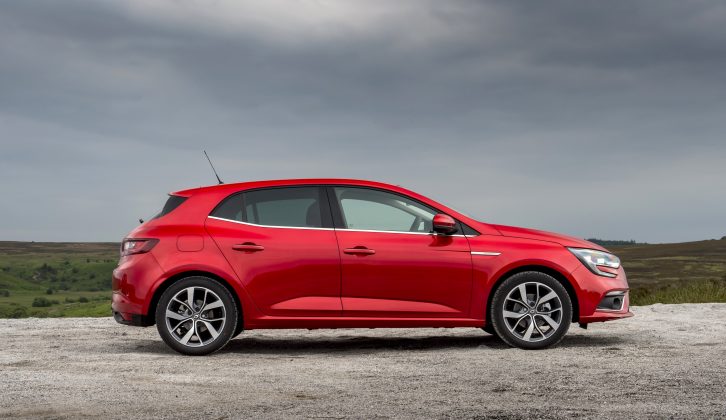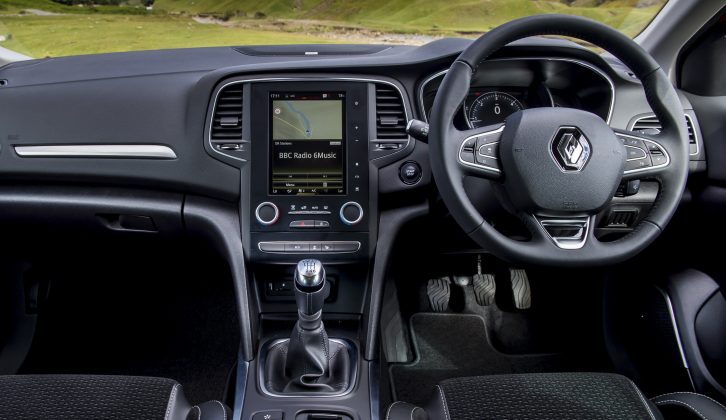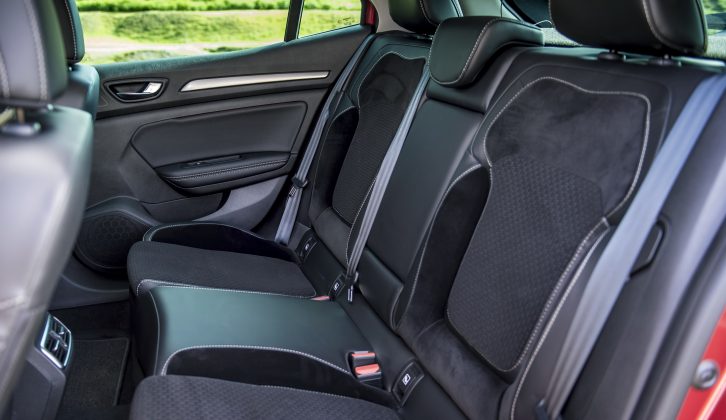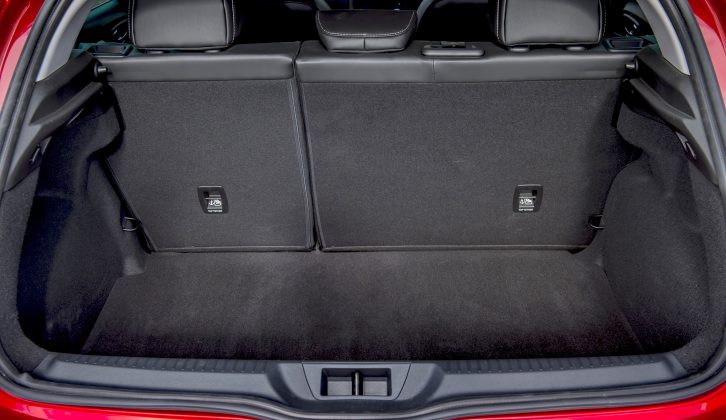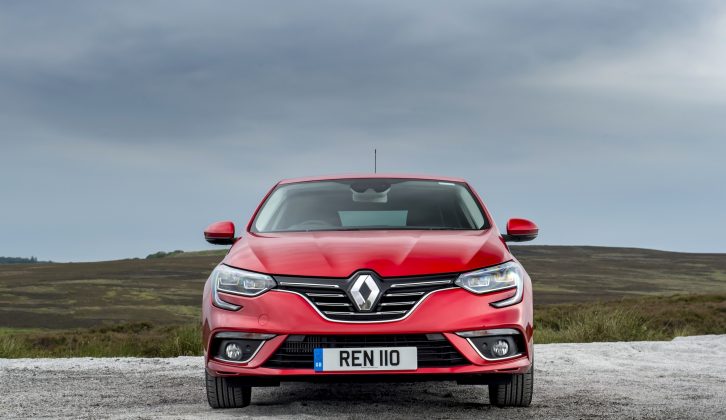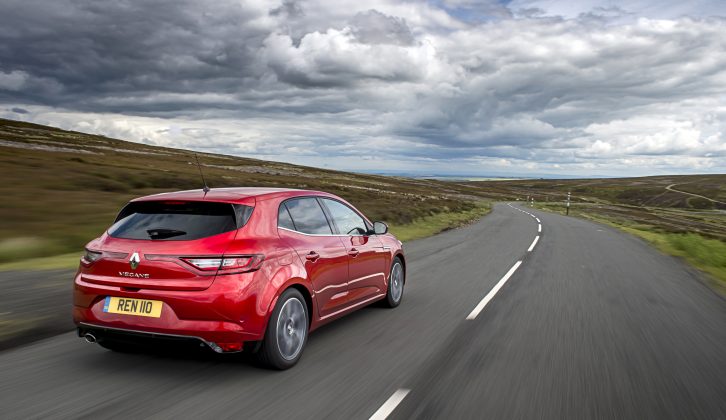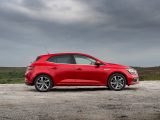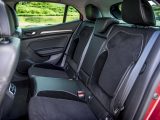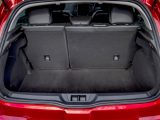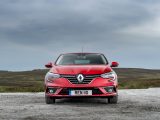There’s talent wherever you look in the small hatchback class. You want space? Try the Škoda Octavia. Good looks and a quality cabin? How about the Vauxhall Astra? The likes of the Ford Focus, Mazda 3 and Volkswagen Golf have their strengths, too, and many of these models make capable tow cars if you own a lightweight caravan.
So the new Renault Mégane has its work cut out. What does the Renault do that its many very capable rivals don’t?
I’ll come back to that, but for now let’s take a quick overview of the range. Prices start from £16,600 for the petrol-powered TCe 130 Expression+. With 128bhp and just 151lb ft of torque, it’s not an obvious tow car.
The other petrol option tops the range. The TCe 205 is priced from £25,500 and has 202bhp and 207lb ft of torque, but a hot hatch isn’t the most likely tow car either.
Which leaves the two diesels. The more powerful of the two is the dCi 130 with 128bhp and 236lb ft of torque. We know it’s a decent engine for towing, as it powered the Nissan Qashqai to overall victory at the Tow Car Awards in 2014. This model has a kerbweight of 1504kg (including 75kg for the driver which Renault doesn’t include in its published kerbweights), which gives an 85% match figure of 1278kg. The legal towing limit is 1600kg (300kg more than the other models). Prices for this engine variant start from £20,600.
I’ve been driving the dCi 110, priced from £17,900, with 108bhp and 192lb ft of torque. It’s the same engine found in the larger Kadjar which we tow tested a few months ago, and we found performance pretty leisurely when towing. Kerbweights start from 1462kg including 75kg for the driver, giving an 85% match figure of 1243kg.
So, you’ll need a light caravan and a patient approach to gathering speed, but this engine has other strengths. It’s quieter than the dCi 130, with little engine noise unless you rev the engine hard.
Economy is another strength, certainly on paper. With 16- or 17-inch alloys fitted, the dCi 110 achieves 76.4mpg on the combined cycle (dropping to 72.4mpg with 18-inch wheels). In reality, though, returns in the 50s are more likely judging by our time with the car.
Whichever engine is under the bonnet, the Mégane is a striking car. It’s longer, lower and wider than the old model, which gives a sportier look. Perhaps some of the details, like the odd C-shaped headlights, look a bit fussy, but it’s a much more individual and distinctive car than most of its opponents.
Renault has taken its own approach with the ride and handling of the Mégane, too. The suspension favours ride comfort over agility, smoothing bumps in the road efficiently at high and low speeds. However, the trade-off is a soft and loose feel on twisty country roads, and numb steering also puts a lid on any fun.
The Multi-Sense system allows the driver to alter the car’s systems to deliver a sportier drive, but while the Sport mode weights up the steering and sharpens the throttle response, it has no effect on the car’s suspension. A slightly crisper throttle and heavier steering aren’t enough to make this easy-going car into a more dynamic performer, not by a long stretch.
It’s always tricky to make judgements about how a car will tow without putting a caravan on the back and finding out for certain, but tighter body control would give us more confidence in the Mégane’s towing abilities.
In everyday driving, though, many drivers will welcome the Mégane’s comfy ride rather than miss a sharper edge to its handling. So long as I wasn’t in a hurry, I found the Mégane’s softer suspension made a pleasant change to its firmer riding rivals.
The comfortable ride is best appreciated from the front seats. There’s plenty of room up front, but despite the fourth-generation Mégane’s expanded dimensions rear-seat space is tight. The boot is large, though, with a 434-litre capacity. That beats the VW Golf and Ford Focus, for example.
The interior looks attractive, to my eyes at least. It’s reasonably well finished, too, although the plastics don’t feel as plush as a Golf’s.
Most models have the R-Link 2 infotainment system with an 8.7-inch screen in an unusual portrait orientation. It’s a big improvement on Renault’s earlier infotainment systems. However, it’s a shame that the air conditioning can’t be adjusted more easily. You need to press the screen in just the right spot and swipe upwards to call up the controls, and it sometimes takes two or three attempts. Perhaps I’m old before my time, but what’s wrong with dials?
Renault has equipped all models with a respectable list of standard kit. Even the entry-level Expression+ has 16-inch alloys, split/fold rear seats, Bluetooth connectivity, dual-zone climate control and a 7.0-inch touchscreen. Safety kit is comprehensive, too, and the car has a five-star rating from Euro NCAP.
So, back to the question of whether the Mégane does anything its rivals don’t. Well, it rides more comfortably than most, it looks distinctive, and it’s up with the very best in terms of safety. But it’s not the roomiest, most practical, or the most enjoyable to drive.
The new Renault Mégane is a good car, but it’s up against some great ones.
It's a much more individual and distinctive car than most of its opponents
